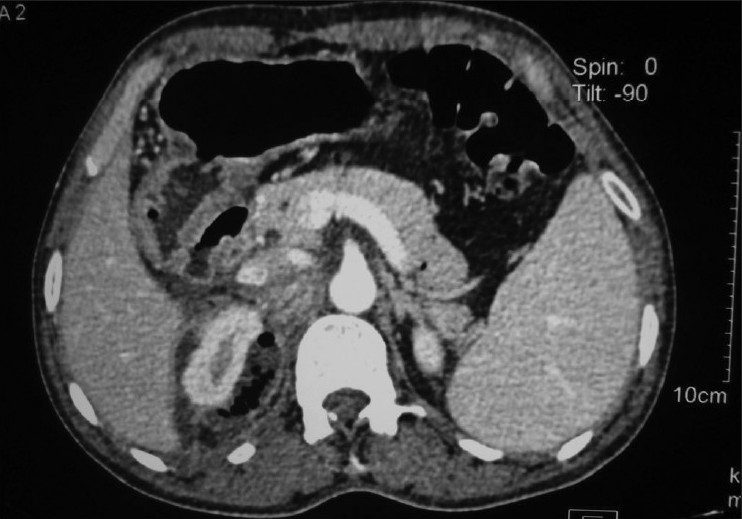Playlist
Show Playlist
Hide Playlist
Pyelonephritis (Kidney Infection) and Perinephric Abscess: Pathology, Signs & Symptoms
-
Slides PyelonephritisPerinephricAbscess InfectiousDiseases.pdf
-
Download Lecture Overview
00:02 So let's talk about the pathogenesis. 00:04 The causative organisms from the patient's own intestinal flora are the culprits. 00:11 They are going to colonize the vaginal introitus and periurethral area, and get into the bladder. 00:18 Now if it's a catheterized patient, that's a direct access to the bladder from even the organisms that are on the hands of healthcare workers, or organisms that were transported from the periurethral space or on the catheter into the bladder. 00:34 And I want to stop here and mention the fact, if a patient has an indwelling bladder catheter, at the rate of about 5-8% per day, that patient's bladder will become colonized with microorganisms, and there's nothing you can really do to prevent it. 00:55 If you give intravesicle antibiotics, eventually the patient will still get colonized, but it will be with resistant organisms -- resistant to whatever antibiotic or any microbial, any antiseptic you put in the bladder. 01:11 So you cannot prevent colonization. 01:14 So if its 5-8% per day, then probably at the end of 2-3 weeks, everybody is colonized. 01:23 And some of those organisms can cause not only cystitis but can ascend the urinary tract and cause kidney infection. 01:32 And that's the pathogenesis, they ascend the ureters, go to the renal pelvis, and then enter the renal parenchyma. 01:42 Now what promotes an ascending infection? Well, as I mentioned to you, some of these organisms are highly motile, and can ascend the urinary tract against the urinary stream. 01:53 Notorious among these is Proteus species. 01:58 For example, Proteus mirabilis has swarming motility. 02:02 It can literally go against the urine stream. 02:06 Sexual intercourse, especially if a woman uses spermacides. 02:12 What the spermacides do is they actually will kill the normal lactobacilli that normally colonize vaginal flora, and allows colonization by things that are resistant like E. coli. 02:28 Then if someone doesn't know what he or she is doing and putting in a bladder catheter, we can introduce contaminating organisms into the bladder. 02:40 Now this vesicoureteral reflux, what that means is that urine during voiding, instead of being voided out the urethra is refluxing up into the ureters. 02:53 Now if that happens, for example a woman or a man may feel like they need to void. 03:00 They may void and then urine refluxes up into the ureters. 03:07 When it comes back down into the bladder, it doesn't give the sensation of needing to void because it's a smaller amount. 03:14 So that urine sits there -- it's urinary stasis. 03:18 and if there are bugs around, the organisms can flourish in static urine. 03:23 The other thing is, is it the chicken or the egg? Does the patient have a bladder infection which then by causing edema of the bladder wall opens up the ureter and the ureteral pelvic junction, and allows urine to reflux? It's not real clear. 03:45 Young girls who have urinary tract infections, many of them, have been shown to have vesicoureteral reflux. 03:52 But once again, which came first? Was it the urinary tract infection or the vesicoureteral reflux? And then pregnancy produces a normal anatomic obstruction of the ureters which can lead to a urinary tract infection. 04:08 As a matter of fact, if a woman has bacteria in the urine, a pregnant woman, she needs to be treated even if it doesn't reach the amount for symptoms or the requisite amount that cause the urinary tract infection because with pregnancy she is very likely to get pyelonephritis. 04:32 So that's why women on their prenatal visits are always checked for the presence of bacteriuria. 04:40 And then of course any urologic abnormality were predisposed to pyelonephritis and perinephric abscess. 04:49 So what are the clinical features then? Well, in children, you need a good pediatrician or family physician to be suspicious because the symptoms are non-specific. 05:02 Children may have fever, they may have failure-to-thrive, they may have vomiting for no apparent reason, they could have a urinary tract infection. 05:13 In women, fever is very, very common with an infection of the kidney. 05:20 It's not that common in cystitis. 05:24 So, sometimes, they will be septic when they come in, they will be very ill with fever. 05:31 And then flank pain is crucial to test a woman for costovertebral angle tenderness, because that is where the kidneys are located posteriorly. 05:42 They will, like cystitis, have frequent painful urination of small amounts of turbid urine. 05:49 They may also feel suprapubic heaviness or pain. 05:54 But testing for costovertebral angle tenderness is extremely important. 06:01 Men will very often have fever. 06:05 But it may not be just kidney. 06:08 It may be prostatitis. 06:10 And so to determine whether a man has a kidney infection or prostatitis may be difficult. 06:18 So the only way to really determine that is to do a digital rectal exam and certainly, it's an uncomfortable exam to start with. 06:26 So the good physician would say to his patient, "I need to do a rectal exam and it's going to feel like you need to move your bowels, but I'm going to position my finger so that I can touch your prostate." And if on that examination a very light touch of the prostate shows great pain, that patient probably has prostatitis. 06:48 Now you don't want to massage or vigorously palpate the prostate because you may introduce sepsis, if there is a focus in the prostate. 07:00 And then, of course, you would check the man for costovertebral angle tenderness. 07:05 But all cases of pylonephritis or even cystitis in the urine in a man require a further evaluation for urologic abnormalities.
About the Lecture
The lecture Pyelonephritis (Kidney Infection) and Perinephric Abscess: Pathology, Signs & Symptoms by John Fisher, MD is from the course Urinary Tract Infections. It contains the following chapters:
- Pyelonephritis and Perinephric Abscess – Pathology
- Clinical Features in Children, Women and Men
Included Quiz Questions
Which of the following is the most common route of infection in the urinary tract system?
- Ascending
- Hematogenous
- Perirenal spread
- Iatrogenic
- Opportunistic in the immunosuppressed patient
Which of the following best defines vesicoureteral reflux?
- The retrograde passage of urine from the bladder into the upper urinary tract
- The retrograde passage of urine from the ureter into the renal pelvis
- The retrograde passage of urine from the urethra into the bladder
- The retrograde passage of urine from the renal pelvis into the nephron
- The passage of urine from the ureter into the bladder
Which of the following patients is most likely to benefit from antibiotic therapy?
- A pregnant woman with asymptomatic bacteruria
- A patient with interstitial cystitis
- A patient with a chronic indwelling catheter and bacterial colonization
- A patient with prostate hyperplasia
- All patients with nephrolithiasis
Customer reviews
5,0 of 5 stars
| 5 Stars |
|
5 |
| 4 Stars |
|
0 |
| 3 Stars |
|
0 |
| 2 Stars |
|
0 |
| 1 Star |
|
0 |






